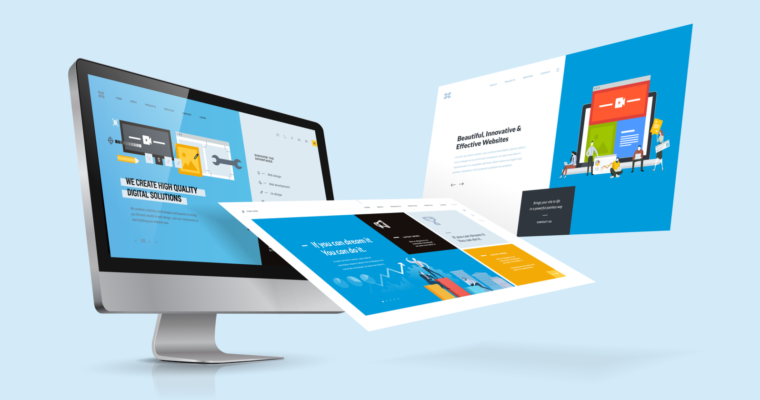HOW TO LEARN ABOUT WEBSITE DESIGN
Building a website is quite a complex process. Different specialists work on building a website, and depending on various factors - from how complicated the website is to be, to how the cooperation with the client is going - the process may last from several days (the simplest versions, business cards) to several weeks ( in the case of extensive websites) . So let's consider what our priorities are. Is the website design to be primarily simple and functional, or expanded and original, whether we care about time, can we wait a bit, and finally - what our budget is. The more complicated the page, the more time it needs to be spent on it, which increases costs.
Not everyone who decides to have their own website design needs an extensive website. Sometimes a simple, transparent website is enough - a business card, serving mainly an informative role. If we want a cheaper solution and a standard graphic design, this is the perfect solution for us. It will not be fancy and particularly original, but it will certainly fulfill its function well and its price will not be excessive . Creating a business card page, presenting the company and its offer, containing basic information, usually takes a few or several days.
In the case of more complex websites, the development process may take several weeks, but about 30 days is usually the optimal time to complete the project. It should be remembered that additional elements (e.g. graphics, animations) will increase the price and may extend the implementation time. Work on the website can be much more efficient if the customer has already prepared materials - graphics such as company logo, content, photos or files to download from the website.
Before starting the implementation, it is necessary to do good research and plan the next stages. Only after defining the goals and needs of the client, designers and web designers can start working . The next step is coding , which creates the actual page from the designs. The last points are testing and finally website implementation.
A good website design must first of all be functional, intuitive, thoughtful, user-friendly and fully responsive. Responsiveness is very important because, as statistics show, we use mobile devices more and more. It is worth remembering that users do not like pages that take long to load, but they like all amenities, so it is worth connecting the page with plugs to social media channels. When creating a website, good cooperation between the client and the contractor is key. With clearly defined customer goals and efficient communication, work is faster. However, it is worth being patient - if every detail is refined at the implementation stage, the page it will be properly optimized and simply better.
The User Interface (UI) is the space that allows human-machine interaction. We see interfaces literally everywhere , e.g. in telephones, computers, ATMs, and UI design has become a very fashionable specialty. Unfortunately, especially for novice designers, creating interfaces seems to be a very simple task. Meanwhile, designing a good UI that is friendly and won't frustrate users is a real challenge.
A good designer must know the future user and his needs - it is not enough for an interface to work. The UI must be user friendly and understandable. It should be intuitive and provide easy operation of devices or applications. Both advanced users and complete beginners will be able to easily navigate through a properly designed interface. It is worth emphasizing that the user interface should be aesthetic, but its website design is not about fancy graphics . The UI designer has to consider a whole range of scenarios, such as what will happen when the user presses a button, whether he will know what actions to take or how to undo an action, and anticipate what problems users may encounter.
Users don't like interfaces with chaos, excess elements and inconsistency. Irritating are any shortcomings , e.g. subpages without a link that allows you to easily return to the main page. Ergonomics, functionality and freedom of movement around the site or application are important. It is worth focusing on simplicity and thoughtful navigation. Aesthetics and a consistent style are important, but the excess of graphics and animation serves no purpose - it only introduces unnecessary chaos and distracts users. You have to website design remember that even if the interface is visually attractive but the user is not able to navigate through it, it becomes useless. The content on the website should be organized according to a specific hierarchy,the user cannot be bombed with content. As in everything, moderation is also necessary here.
In UI design, even the smallest details count, i.e. the correct sequence of buttons. When designing, one should take into account what the users are used to - for example, the fact that the buttons confirming actions are on the left, and those with negative actions (eg "cancel") - on the right. All forms should be clear and short. These are just general issues that every UI designer must take into account in his work. In fact, designing an interface means constantly getting to know users and looking for better solutions.





Comments
Post a Comment